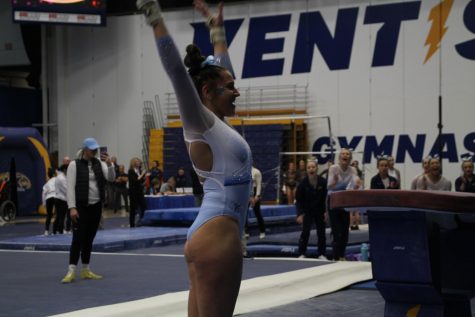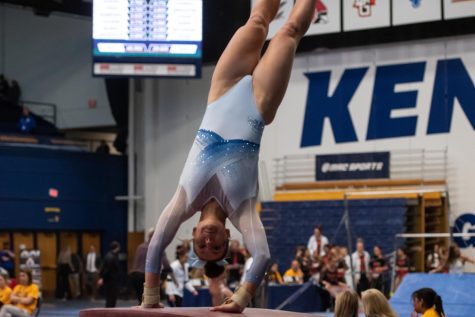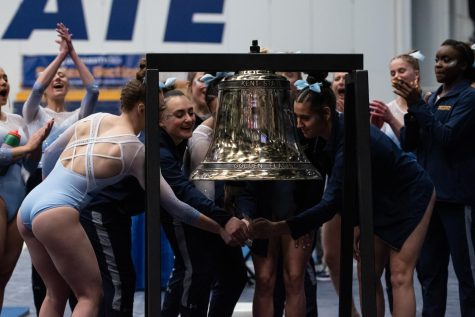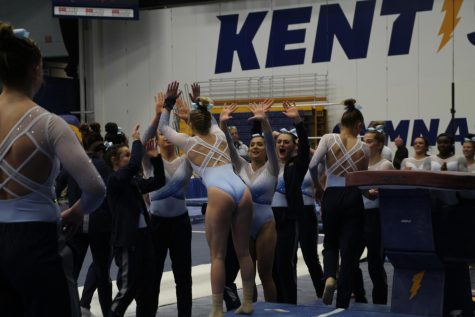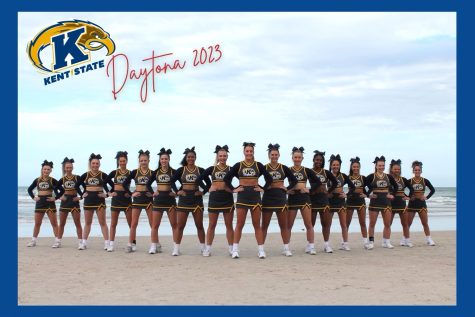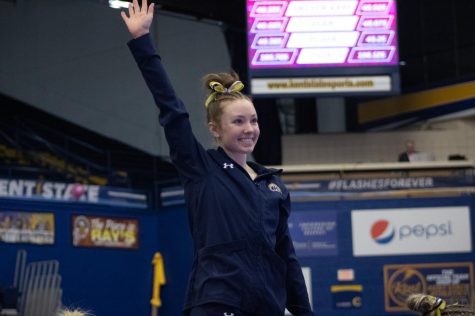Club sports try to stay afloat despite issues with money and membership
April 23, 2008
Alisha Williams | Daily Kent Stater
Credit: DKS Editors
Jen Barrick practiced gymnastics since she was 2 years old, and when she transferred to Kent State from Xavier University earlier this year she was disappointed to find that no gymnastics club was offered.
“A lot of other people tried to start one and then it just didn’t work out,” Barrick, senior architecture major, said about the Kent State gymnastics club.
A lack of student involvement, financial problems and student management are just some of hardships many club sports face while trying to make their club successful now and for years to come.
“A lot of times, people are just not informed,” senior communications major Coleman Caster, who is a member of the ski and snowboarding team, said. “Maybe a new club pops up over at the (Student Recreation and Wellness) Center and somebody might not know about it.”
Getting Started
“I was going to do the NCAA team (here at Kent State), but they worked out all the time and I don’t have time to do that,” Barrick said.
Her passion for gymnastics led her to contact the assistant director of the Student Recreation and Wellness Center, Greg Bailey, about starting a club sport.
Bailey explained that the club would have to start as an interest group and go through a trial year. At the end of every month Barrick fills out paperwork about what the club is doing and how many people attend each practice. If there are enough people attending the club’s events and meetings, it can become a club sport.
“We want to provide programs that will allow (the students) to continue their interest,” Bailey said. “Continue what they have a passion for.”
Recruiting students
Barrick put fliers around campus. Most clubs find this the easiest way to reach students.
“I think if more club sports took the time to post stuff, I think people would be more curious,” said former equestrian team member, sophomore visual communication major Megan Billy.
Other clubs recruit students via word of mouth and some travel to high schools. It’s difficult, when most club sports are pay-to-play, having to compete against other clubs that are not.
“You go out, you watch teams play, you try to get kids that are interested in Kent State academically,” hockey coach Jarret Whidden said.
Barrick’s fliers proved successful and more than 25 people attended the first meeting. Once students gathered, Barrick needed to find a place for the team to practice.
Pay-to-play and practice
With the NCAA gymnastics team using Kent State’s main facilities, Barrick found Flytz Gymnastics Center in Cuyahoga Falls, which allows the team to practice twice a week for $100.
Club sports have to pay fees to use any facility, including those owned by Kent State. This fee goes towards building rental, maintenance, repairs and staffing in case of an emergency.
“We actually have to pay the university, believe it or not, to use their facilities, which really stinks,” men’s lacrosse coach Mark Lewis said.
The fee may seem unfair but coaches and players alike understand the importance of having good, safe equipment and buildings.
Members have to pay dues to cover club needs like facility rentals, memberships to larger organizations and general expenses. Club sports can cost anywhere from $40 to over $1,000 a year for one student.
“Your competitive sports, which would be for example: lacrosse, volleyball, rugby, ice hockey, soccer club, so forth and so on,” Bailey said. “Those are typically and traditionally going to be more expensive to participate, to run, than for example a martial arts club.”
The cost of participating is what stops most students and hurts the clubs.
“Unfortunately, it’s the nature of the beast,” Whidden said. “The toughest part that it comes into is recruiting. Having to call a player, getting them interested in the school, getting them interested in the program and then having to come back and say ‘well you know you also have to pay-to-play.'”
Joining a league
After getting members, finding a facility and figuring out student dues, Barrick contacted the National Association of Intercollegiate Gymnastics Club – NAIGC. This is a very important aspect for a club sport, Bailey said.
“If we have a club who is not represented by an intercollegiate athletic program, then we should do everything we can to get that club as competitive as possible, because that is a great recruiting tool for students,” he said.
The men’s lacrosse team joined the National Colligate Lacrosse League earlier this year and as a result has seen an increase in inquiries about the team and recognition from other colleges.
Keeping the club going
Now that Barrick has the gymnastics club up and running, it’s time for the hard part: keeping the club running and students involved.
One of the problems some club sports have is management. A lot of club sports, including gymnastics, do not have coaches and therefore are run by older students.
“Another problem would be that (clubs are) student run, which could lead to power struggles,” junior speech pathology major Caitlyn Barney, who is a former Equestrian team member, said.
Once a club has successful student managers, it’s sometimes hard to find replacements.
“If you have a team where you have all the managers are seniors and you have a whole new group coming in, the group could fall apart, because there is no new management,” Barney said.
Most of the time it is hard work to be a club sport manager. The managers are in charge of dealing with Kent State, the league they are affiliated with and looking out for the well-being of the club.
“I can’t do everything,” Barrick said. “I already have a minor in business and major in architecture, along with everything else.”
Although club sports cost money, time, energy and sometimes a little stress, most club sport members agree that it is well worth it for the passion.
“You do it because it’s what you’re good at,” Caster said. “And you do it for the love of the sport.”
Contact recreation reporter Pamela Crimbchin at pcrimbch@edu.












